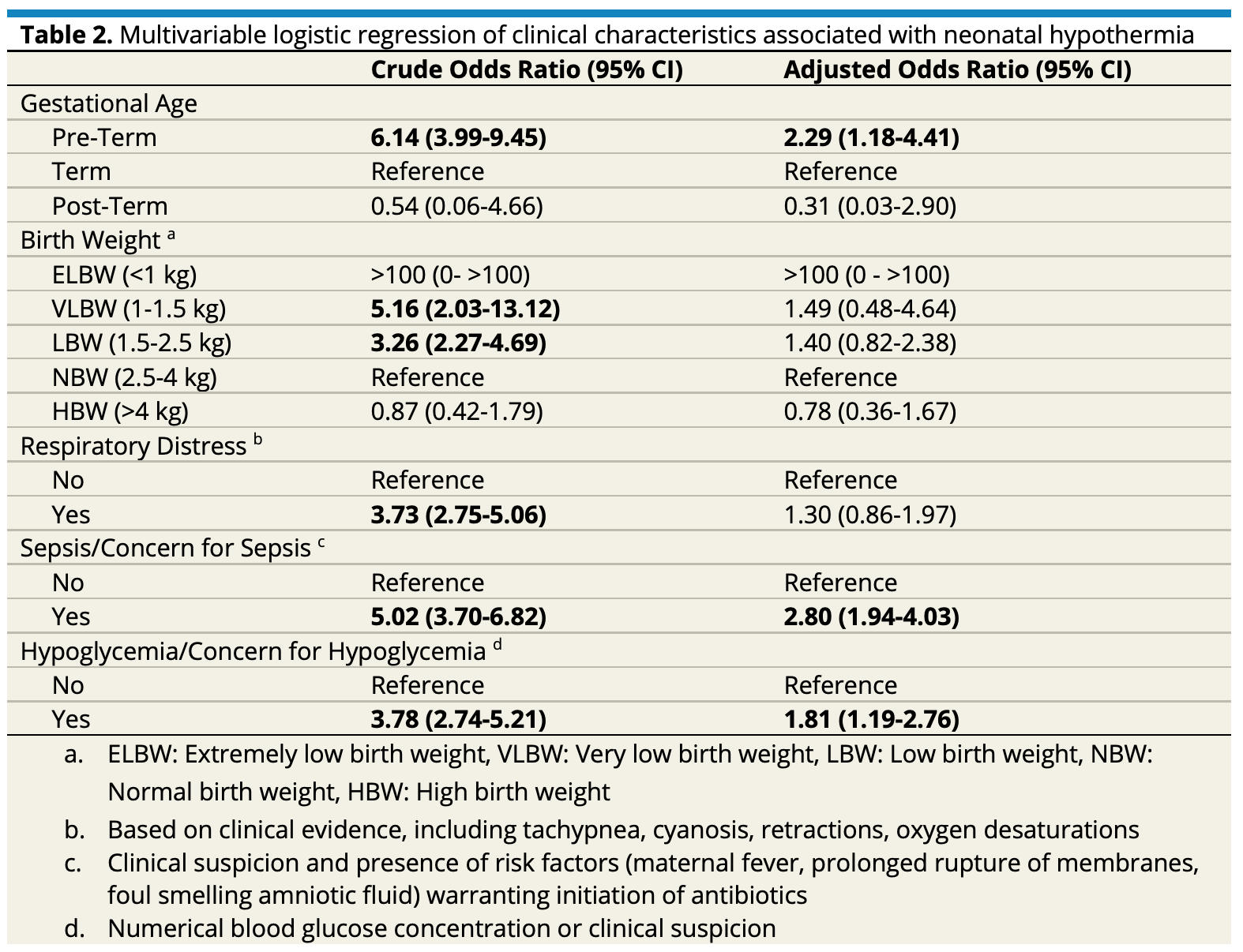Global Neonatal & Children's Health
Category: Abstract Submission
Global Child and Adolescent Health I
135 - Leveraging clinical decision support software to evaluate the prevalence of neonatal hypothermia and associated risk factors in low resource settings
Friday, April 22, 2022
6:15 PM - 8:45 PM US MT
Poster Number: 135
Publication Number: 135.111
Publication Number: 135.111
Mary Muhindo, Infectious Disease Research Collaboration, Tororo, Tororo, Uganda; Joshua Bress, California Pacific Medical Center, Albany, CA, United States; Jean Armas, Global Strategies, Oakland, CA, United States; Ryan Brewster, Boston Children's Hospital, Boston, MA, United States

Ryan Brewster, MD (he/him/his)
Resident Physician
Boston Children's Hospital
Boston, Massachusetts, United States
Presenting Author(s)
Background: Neonatal hypothermia is a major cause of preventable mortality and morbidity in low- and middle-income countries. Accurately quantifying the magnitude of hypothermia remains challenging, however, due to the lack of robust data collection systems and electronic medical records. Clinical decision support software (CDS) may be utilized to improve data capture and analysis in low-resource settings.
Objective: To describe neonatal temperatures and associated risk factors entered into a novel CDS in Uganda.
Design/Methods: The NoviGuide Neonatal Application is a neonatal CDS that incorporates newborn clinical management pathways in alignment with national standards. The platform has been implemented in four hospitals in eastern Uganda, a district hospital (Tororo General Hospital (TGH)) and three Health Center IV hospitals in Nagogonera, Mulanda, Mukujju. We performed a cross-sectional study of NoviGuide data voluntarily entered by midwives between 09/2020 and 11/2021. Completed initial assessments of newborns < 24 hours old were included for analysis. Multivariable logistic regression models were fit to evaluate clinical features associated with hypothermia (core body temperature < 36.5 ºC).
Results: A total of 1027 newborn assessments were performed between 09/2020 and 11/2021, most of which were completed in TGH (46.2%). The overall prevalence of neonatal hypothermia was 30.5%. Estimates of hypothermia significantly varied across sites. Preterm delivery (aOR 4.63, 95% CI 2.42-8.83), sepsis/concern for sepsis (aOR 2.80, 95% CI 1.94-4.03), and hypoglycemia/concern for hypoglycemia (aOR 1.81, 95% CI 1.19-2.76) were among the features associated with neonatal hypothermia.Conclusion(s): In this cross-sectional analysis of CDS data across four Ugandan hospitals, overall rates of neonatal hypothermia and associated risk factors were consistent with previous studies. There are imitations to CDS usage data; voluntary CDS does not capture all encounters and without patient identifiers, CDS data cannot be easily linked to real-world care delivery and outcomes. Nonetheless, our results suggest that CDS usage data can help health systems capture temperature data from facilities without robust medical records. Such functionality has the potential to inform quality improvement efforts and targeted resource allocation to the sites of highest need. Further work is needed to understand the relationship between temperature data entered into CDS, data recorded in medical records, and actual care delivery in settings with poor informatics infrastructure.
Leveraging clinical decision support software to evaluate the prevalence of neonatal hypothermia and associated risk factors in low resource settingsBrewster_CV_010621.pdf
Table 2 Multivariable logistic regression of clinical characteristics associated with neonatal hypothermia
Multivariable logistic regression of clinical characteristics associated with neonatal hypothermia
Objective: To describe neonatal temperatures and associated risk factors entered into a novel CDS in Uganda.
Design/Methods: The NoviGuide Neonatal Application is a neonatal CDS that incorporates newborn clinical management pathways in alignment with national standards. The platform has been implemented in four hospitals in eastern Uganda, a district hospital (Tororo General Hospital (TGH)) and three Health Center IV hospitals in Nagogonera, Mulanda, Mukujju. We performed a cross-sectional study of NoviGuide data voluntarily entered by midwives between 09/2020 and 11/2021. Completed initial assessments of newborns < 24 hours old were included for analysis. Multivariable logistic regression models were fit to evaluate clinical features associated with hypothermia (core body temperature < 36.5 ºC).
Results: A total of 1027 newborn assessments were performed between 09/2020 and 11/2021, most of which were completed in TGH (46.2%). The overall prevalence of neonatal hypothermia was 30.5%. Estimates of hypothermia significantly varied across sites. Preterm delivery (aOR 4.63, 95% CI 2.42-8.83), sepsis/concern for sepsis (aOR 2.80, 95% CI 1.94-4.03), and hypoglycemia/concern for hypoglycemia (aOR 1.81, 95% CI 1.19-2.76) were among the features associated with neonatal hypothermia.Conclusion(s): In this cross-sectional analysis of CDS data across four Ugandan hospitals, overall rates of neonatal hypothermia and associated risk factors were consistent with previous studies. There are imitations to CDS usage data; voluntary CDS does not capture all encounters and without patient identifiers, CDS data cannot be easily linked to real-world care delivery and outcomes. Nonetheless, our results suggest that CDS usage data can help health systems capture temperature data from facilities without robust medical records. Such functionality has the potential to inform quality improvement efforts and targeted resource allocation to the sites of highest need. Further work is needed to understand the relationship between temperature data entered into CDS, data recorded in medical records, and actual care delivery in settings with poor informatics infrastructure.
Leveraging clinical decision support software to evaluate the prevalence of neonatal hypothermia and associated risk factors in low resource settingsBrewster_CV_010621.pdf
Table 2
 Multivariable logistic regression of clinical characteristics associated with neonatal hypothermia
Multivariable logistic regression of clinical characteristics associated with neonatal hypothermia